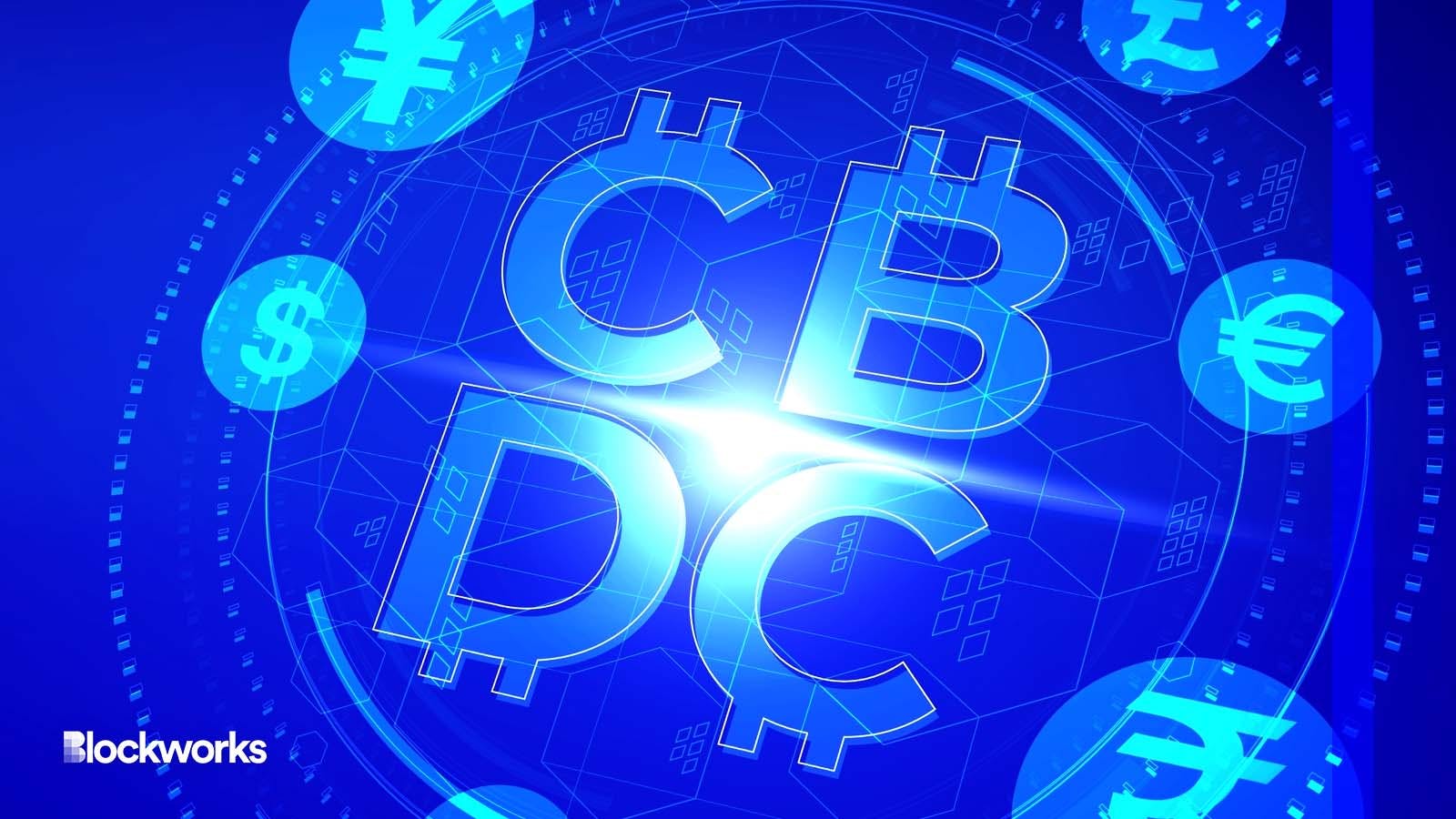93% of banks exploring potential CBDC: Bank of International Settlements
60% of banks surveyed said stablecoins accelerated CBDC work

WindAwake/Shutterstock modified by Blockworks
Central banks interested in exploring “some form” of a central bank digital currency (CBDC) rose to 93%, according to a 2022 Bank of International Settlements survey.
Eighty-six banks responded to the BIS survey. However, a June survey from the Atlantic Council found that around 130 countries are exploring CBDCs.
The survey, which was conducted in the latter half of 2022, also found that the number of banks willing to issue a CBDC in the next three years notched up slightly to 18% from 15%, but 68% of respondents said that issuance of a CBDC is “unlikely” any time soon.
“A clear divergence has emerged: compared to last year, some central banks have become more likely to issue a retail CBDC within the next three years, while others indicated to be less likely to do so. The share of central banks likely to have a wholesale CBDC in the short term more than doubled,” the BIS said.
Fifteen retail CBDCs, alongside nine wholesale CBDCs are expected by the end of the decade.
“Work on retail CBDC is more advanced than on wholesale CBDC: almost a quarter of central banks are piloting a retail CBDC. More than 80% of central banks see potential value in having both a retail CBDC and a fast payment system, mostly because a retail CBDC has specific properties and may offer additional features,” the BIS wrote.
BIS also found that the volatility in crypto assets, from the collapses of TerraUSD and FTX — which had wide-ranging effects on crypto and caused volatility, led to piqued interest in CBDCs.
“60% of central banks said that the emergence of stablecoins and other crypto assets has accelerated their work on CBDCs. These central banks generally attach more weight to a broader set of motivations for issuing a CBDC,” the BIS noted.
The BIS has been working on various papers concerning CBDCs. Just last week, it published steps for “secure and resilient” CBDCs.
In May, BIS looked at how central banks can implement offline CBDC technology.
Get the day’s top crypto news and insights delivered to your email every evening. Subscribe to Blockworks’ free newsletter now.
Want alpha sent directly to your inbox? Get degen trade ideas, governance updates, token performance, can’t-miss tweets and more from Blockworks Research’s Daily Debrief.
Can’t wait? Get our news the fastest way possible. Join us on Telegram and follow us on Google News.






